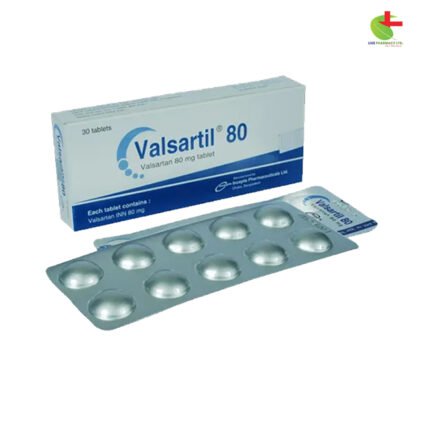Trihexy 1
30.00৳ Strip
- Trihexy is used to treat Parkinson’s disease and movement disorders, including drug-induced parkinsonism.
- Inhibits the parasympathetic nervous system, helping reduce tremors, muscle stiffness, and rigidity.
- Often used alongside levodopa to improve motor function and minimize medication side effects.
- Always consult a healthcare professional before use.
 Brand
Brand
|
Incepta Pharmaceuticals Ltd |
|---|---|
 Generics
Generics
|
Trihexyphenidyl Hydrochloride |
 Type
Type
|
Tablet |
Indications
Trihexy is used as an adjunctive treatment for various forms of parkinsonism, including postencephalitic, arteriosclerotic, and idiopathic types. It is commonly used in combination with levodopa to enhance the effectiveness of treatment in Parkinson’s disease. Additionally, Trihexy helps manage extrapyramidal symptoms caused by medications like dibenzoxazepines, phenothiazines, thioxanthenes, and butyrophenones.
Note: Always follow the advice of a registered healthcare professional.
Description
Trihexy works by inhibiting the parasympathetic nervous system, which relaxes smooth muscle and improves motor function in patients with Parkinson’s disease. It reduces muscle stiffness and tremors and alleviates side effects caused by other medications.
Pharmacology
Trihexyphenidyl is a non-selective muscarinic receptor antagonist, with a greater affinity for the M1 receptor subtype in the central nervous system, particularly the cerebral cortex. This action enhances dopamine release in the striatum, helping to control symptoms of Parkinson’s disease and related movement disorders. The full mechanism of action is still under research.
Dosage & Administration
- Initial Dose: Start with 1 mg of Trihexyphenidyl daily, gradually increasing by 2 mg every 3-5 days until the optimal dose is achieved, usually 6-10 mg daily. Some patients may require up to 12-15 mg daily.
- Drug-Induced Parkinsonism: Dosage varies based on the patient’s response. Typically, doses range from 5-15 mg per day, depending on symptom severity.
- Levodopa Therapy: If used with levodopa, the dose of both medications may need adjustment. Start with 3-6 mg daily, divided into multiple doses.
- Administration: For best results, divide the total daily dose into 3-4 doses during meals. Avoid abrupt discontinuation, as it can cause severe worsening of symptoms, including neuroleptic malignant syndrome (NMS).
Note: Consult with a registered physician before starting or adjusting medication.
Interactions
- Cannabinoids, barbiturates, opiates, and alcohol may amplify the sedative effects of Trihexy.
- Monoamine oxidase inhibitors and tricyclic antidepressants with anticholinergic properties may increase side effects like dry mouth, blurred vision, and confusion.
Contraindications
Trihexy is contraindicated in patients with:
- Hypersensitivity to Trihexyphenidyl.
- Narrow-angle glaucoma, due to the risk of exacerbating intraocular pressure, which could lead to blindness.
Side Effects
Common side effects include dry mouth, dizziness, blurred vision, and mild nausea. Less common but serious side effects may include cognitive dysfunction, urinary retention, and in rare cases, neuroleptic malignant syndrome (NMS). Regular monitoring is recommended to manage side effects effectively.
Pregnancy & Lactation
- Pregnancy: The safety of Trihexy during pregnancy has not been established. Use only if the potential benefit outweighs the risk.
- Breastfeeding: It is unknown if Trihexy is excreted in breast milk. Use caution if nursing, as it may suppress lactation.
Precautions & Warnings
- Monitor intraocular pressure before and during therapy, especially in patients with a history of narrow-angle glaucoma.
- Use cautiously in hot climates, particularly with other anticholinergic medications, as anhidrosis (lack of sweating) may occur, leading to heatstroke.
Overdose Effects
Overdose symptoms include dry skin, dilated pupils, confusion, tachycardia, and fever. In severe cases, overdose may lead to coma or respiratory failure. Immediate medical attention is required for overdose, and treatment typically involves symptomatic support and gastric lavage.
Therapeutic Class
Antiparkinson drugs.
Storage Conditions
Store Trihexy at a temperature not exceeding 30ºC in a dry place, away from light. Keep out of reach of children.













Reviews
There are no reviews yet.